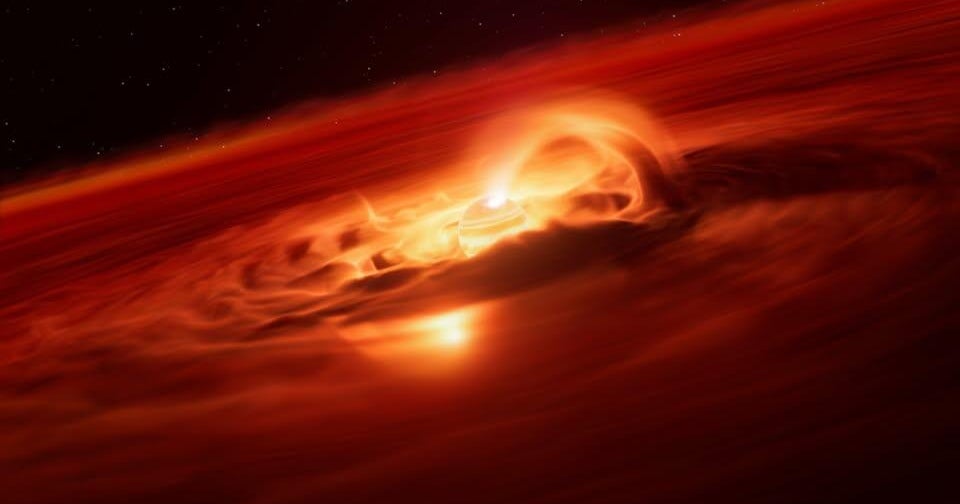Astronomers have made a groundbreaking discovery regarding a “rogue planet” named CHA 1107-7626, located about 620 light years away in the constellation Chamaeleon. This planet, which is 5-10 times the mass of Jupiter, has been observed absorbing gas and dust at an unprecedented rate of 6 billion tons per second. Unlike traditional planets that orbit stars, rogue planets like CHA 1107-7626 drift freely through the universe and are not fully understood in their origins—scientists debate whether they formed like stars or are giant planets ejected from their solar systems.
The study highlights that this planet is still in its infancy, estimated to be just 1 to 20 million years old, and reveals a dynamic nature that blurs the line between planets and stars. Researchers observed significant magnetic activity and changes in the surrounding gas disc during the accretion process, which previously indicated phenomena seen only in stars. This discovery suggests that such planets could grow similarly to stars, complete with their own accretion processes.
The observations were conducted using a Very Large Telescope in Chile and data from the James Webb Space Telescope. The findings challenge conventional views of planetary formation and excite scientists about the potential complexity of rogue planets in their early stages of development.
Source link


